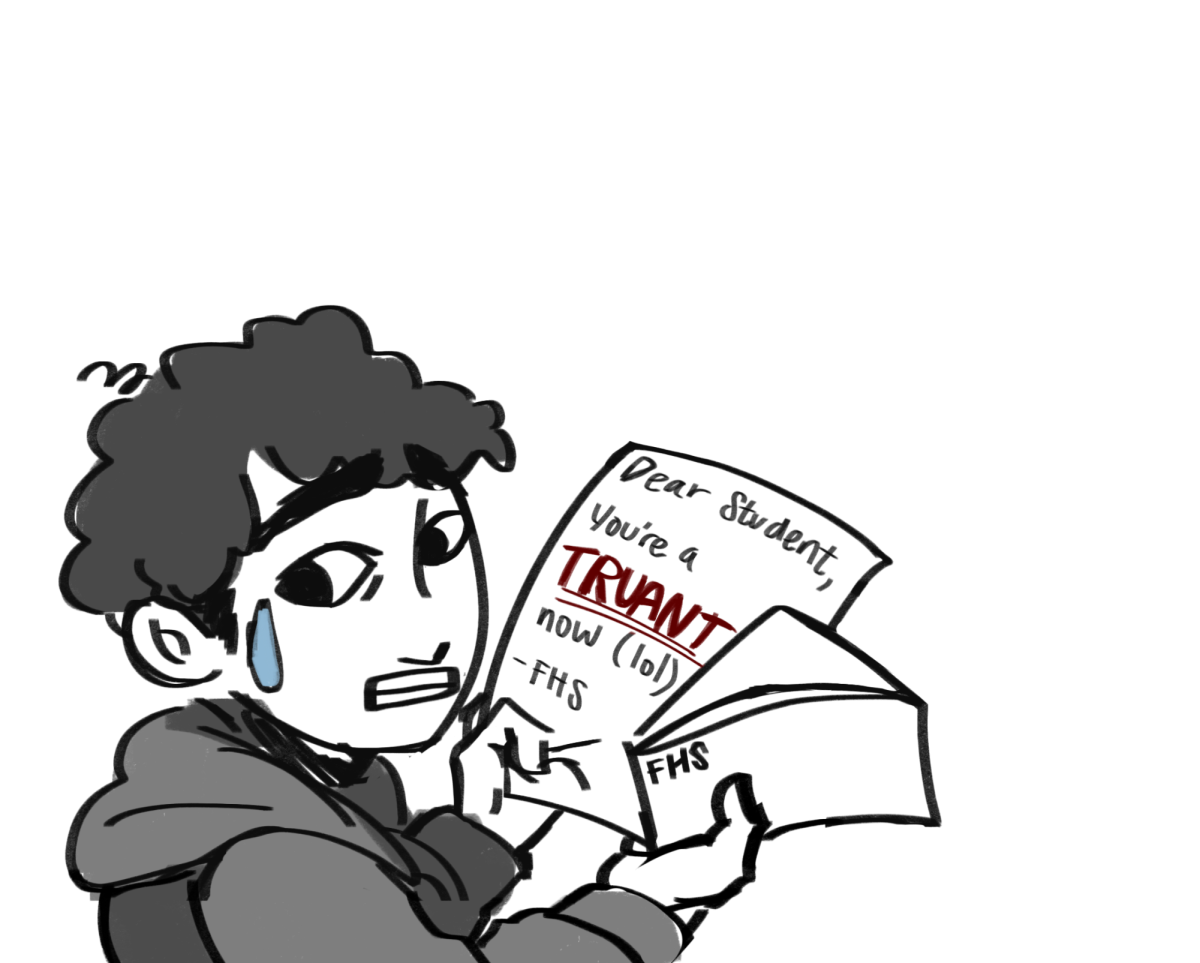Three unexcused absences in one year. Although this may seem like a small amount, these absences will likely result in a truancy letter being sent home. School officials send these letters when a student’s attendance falls below the permitted amount, to inform parents of their child’s attendance and ensure the student’s return to regular school attendance.
Truancy letters are the formal way schools address chronic absenteeism and truancy. Chronic absenteeism refers to a student missing 10% or more of the school year, counting excused and unexcused absences. FUHSD Director of Educational Options Alison Coy explains that the school system in California focuses solely on students who are classified as truants — those with three or more unexcused absences or tardies within the first 30 minutes of a period. During the 2016-17 school year, the state observed that even excessive excused absences were negatively affecting students’ education.
“It’s not saying that you’re a bad person if you’re missing school, but we know that students who miss a certain amount of school can struggle to succeed in school,” Coy said. “Students who struggle to succeed in school may struggle to graduate, ergo a truancy or chronic absenteeism letter may be sent home to your parents.”
Schools start by sending a warning letter to inform students that they are considered truant and should try to limit their absences. If the issue persists, the second letter can begin the first level of personalization with a staff member to check in on the student. After the third letter, FUHSD will hold meetings with the student and their parents to discuss addressing their chronic absences. Finally, after the fourth letter, the district takes action to improve the student’s attendance record.
In some cases, truancy letters can be beneficial, especially for teachers. They can help teachers regulate classes in terms of grouping students. FHS biology teacher Mary Haddad explained the effect of student absences in classes.
“If I’m trying to plan out lab groups in a mindful way, trying to put people with partners in an intentional manner, and then those kids are absent, sometimes I have one kid who’s completely by themselves unexpectedly,” Haddad said. “So it definitely has an effect on the rest of the class when kids are absent.”
Coy said that the K-8 attendance policies differ from FUHSD’s policy. FHS freshman Giorgi Elikashvili spoke about his experience receiving a letter during eighth grade.
“The letter stated that, if the absences continued, I would have to first pay a fine, and if they [continued], I would have to go to court.”
For students in grades K-8, the attendance policies and truancy letters tend to be focused on penalties because parents are more responsible for getting their children to school. There are no punishments at FHS like there were in the past. Administrators used to give fines and confiscate driver’s licenses, but these punishments were since deemed ineffective. For high schoolers, truancy letters act as a boundary line, rather than a punishment, that lets students know when they need to start working on their attendance. It is put in place to help students pass more courses and be able to graduate high school.
“So I don’t love to be like ‘[administration] can’t do anything to you if you don’t attend [school],’” Coy said. “Well no, they can’t, but life will.”










